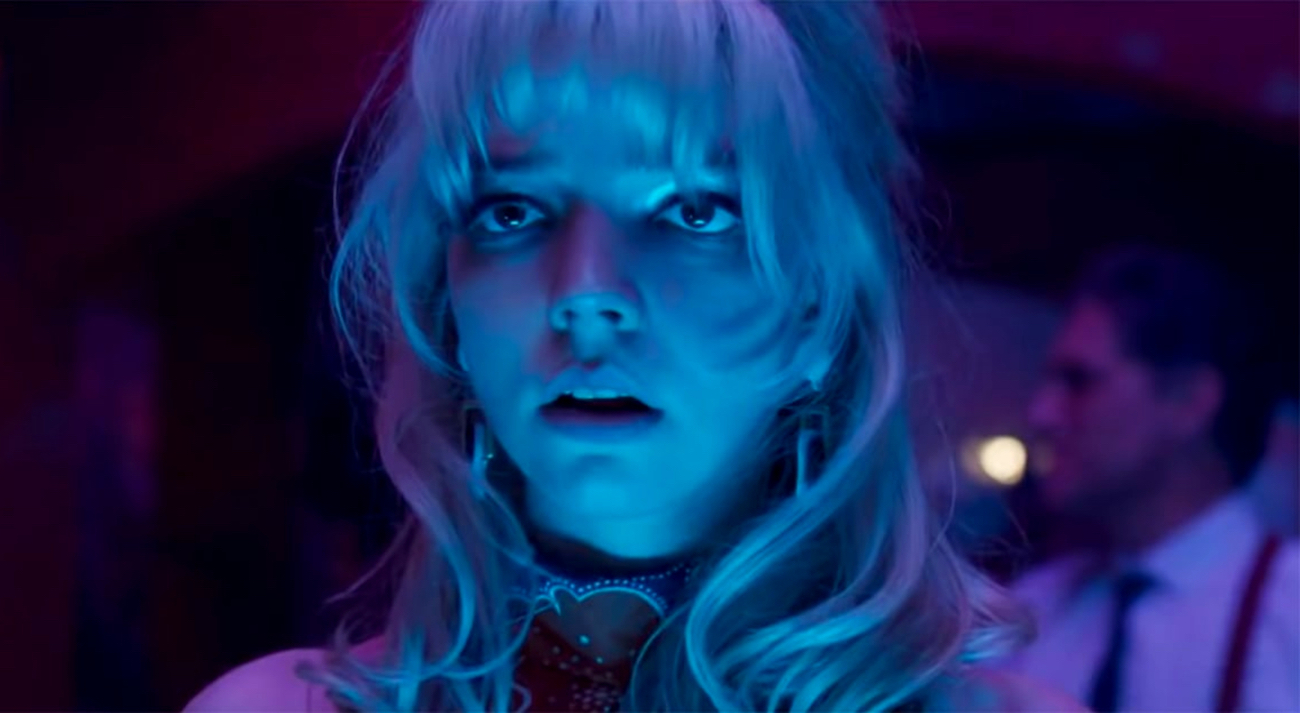The incredible trailer for Last Night in Soho dropped in the middle of the pandemic like an oasis in a desert for cinema-starved folks longing for bold, original films. Looking back, it seemed impossible that Edgar Wright’s latest creation would be able to live up to the impossibly high standards set for it. But Last Night in Soho manages to be part charming and part chilling in its exploration of a very specific 1960s, giallo-inspired aesthetic. It’s a kaleidoscopic flurry of colors and images, and even as it perhaps loses the thread when it’s asked to make sense of itself, it’s still no less appealing. Thomasin McKenzie and Anya Taylor-Joy likewise dazzle in the two leading roles of Eloise and Sandie, bringing emotional context to the fractured narrative through the sheer force of their magnetism.
Eloise Turner (McKenzie) starts the film like any other aspiring fashion designer about to embark on an exciting new adventure in London, except that she’s, well, not. It begins with glimpses of her dead mother in the mirror, disconcerting but apparently something that Eloise has grown used to. And despite her grandmother’s oblique warning that London may be overwhelming for someone with her unique abilities, Eloise brushes the concerns aside and heads to the city of her dreams. She romanticizes London, especially the London of the late ‘60s with its fashion and effortless style. But she does so at her peril because as she pours herself into evoking this period through her design work, a little bit of the darker side of 1960s London begins to pour itself into her.
The troubles begin when she moves into a flat of her own, a top-floor walkup that has a strange energy and allows her to see visions of a glamorous aspiring young singer, Sandie (Taylor-Joy), who is making her way through London decades earlier. Eloise is at first enchanted by the allure of not just the enigmatic, beguiling Sandie but also the entire visual palette of the period she’s been given a unique window into. She draws tremendous creative inspiration from the things that she sees and can’t wait to go to bed each night to revisit a world that has offered her an escape. Eloise changes her hair to the style of Sandie’s, and the lines between the two women become increasingly blurred. But the more time she spends experiencing these visions, the more they bleed into her normal life. She has a harder and harder time waking up, and malevolent shadow men seem to follow her everywhere. Once the link has been forged, it seems difficult to ever sever.
Edgar Wright brings a unique vision to Last Night in Soho, and its full embrace of the sophistication of London in the 1960s is elegantly smudged by how unflinchingly it also depicts the intense predatory atmosphere, especially for young women.
Style and urbanity are mere inches from the nightclub industry’s seedy underbelly, and as Sandie gets closer to her dream, she’s never been further away from it. As Eloise watches Sandie’s career unfold, first with exhilaration and then with horror, her own life has shades of the same misogynistic underpinnings. Upon arriving in London, her cab driver greasily flirts with her, joking about becoming a stalker, and when she tells him that she doesn’t have enough money to pay for the ride all the way to student housing (mostly as an attempt to get out of the car faster), he says that he’s sure they can figure something. This sets up our introduction to Sandie’s life, where men will flirt and charm and offer women the world, but they won’t do it for free.
The interactions of these two women, as they ebb and flow into one another, is the most compelling aspect of the film. Sandie is bold and confident while Eloise is soft-spoken and less comfortable in social situations. Yet they share both a fragility and a powerful reserve of inner strength. It’s fascinating to watch Thomasin McKenzie’s performance as she slowly takes on certain aspects of Sandie’s presence in both her style and affect. Anya Taylor-Joy feels almost otherworldly in her role, with the kind of charisma that makes it impossible to tear your eyes away from her.
Together, both performers, along with Matt Smith as Sandie’s quietly menacing manager, form an unbeatable trifecta that give Last Night in Soho so much of its appeal. The sequence where the three of them are dancing together, Sandie and Eloise trading places with each turn of the camera to form one seamless motion, is the sort of cinematic candy that you could watch for hours. Most audiences would probably be happy to sit in this space for the entirety of the film, so thoroughly and charmingly has Wright cultivated his very specific vibe.
The problems really only come when Wright feels compelled to explain everything. Rather than just luxuriating in this 1960s atmosphere, perhaps having Eloise losing herself in her growing obsession with Sandie, he decides to throw together a not entirely convincing denouement, causing the third act to wobble on its axis ever-so-slightly. He trades the indefinable aura that defines the majority of the film for something more grounded, which takes away some of the magic. It doesn’t necessarily do irredeemable damage to Last Night in Soho, but it does prevent it from reaching the heights it’s clearly aspiring to. Still, the movie’s aesthetic appeal alone makes it a worthy contribution to Wright’s filmography and a bold interpretation of the glamour of the 1960s that manages to be both a love letter and an anti-love letter at the same time.
Last Night in Soho premiered at the Toronto International Film Festival on Sept. 10. It opens in theaters on Oct. 29.
